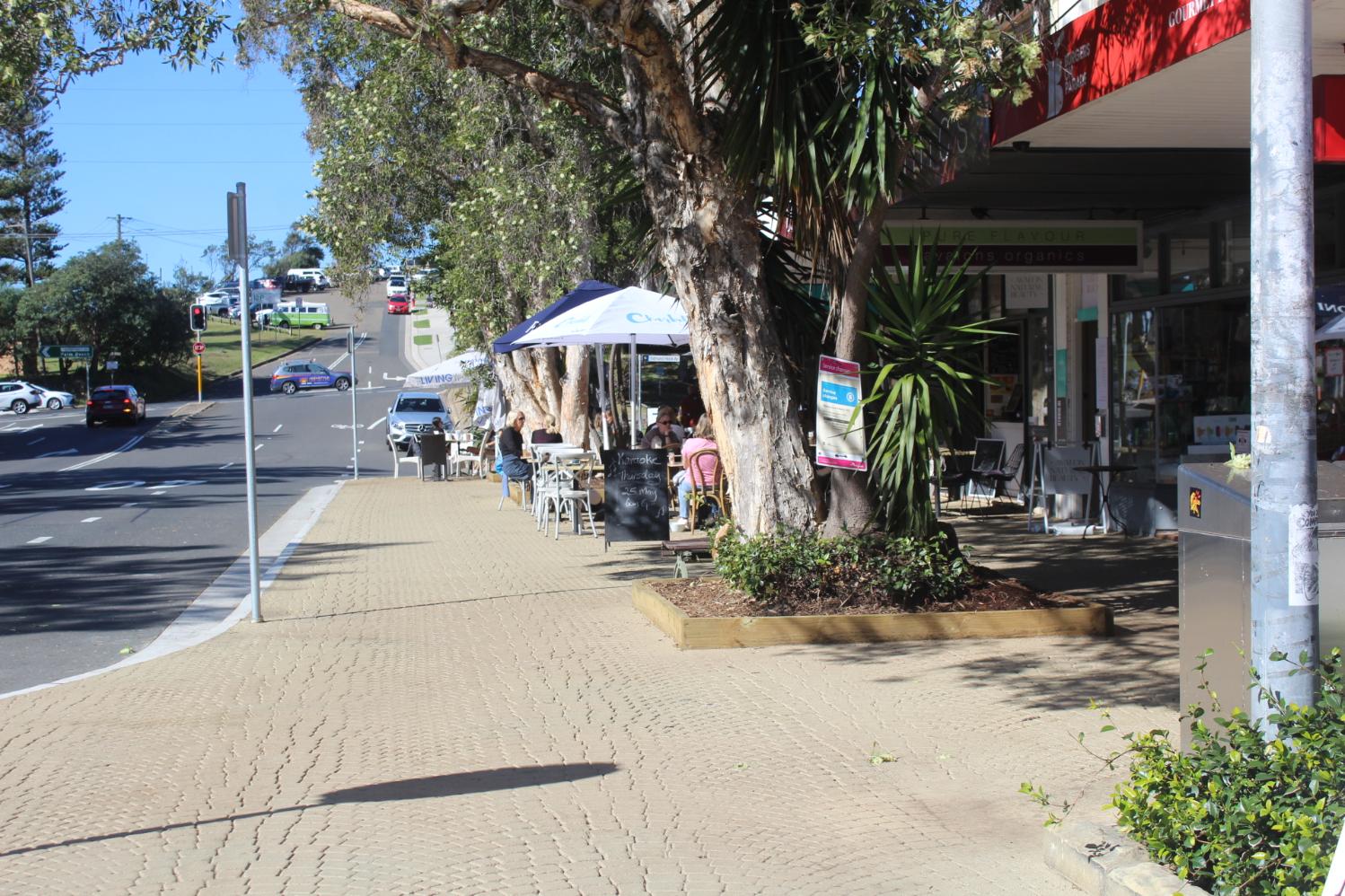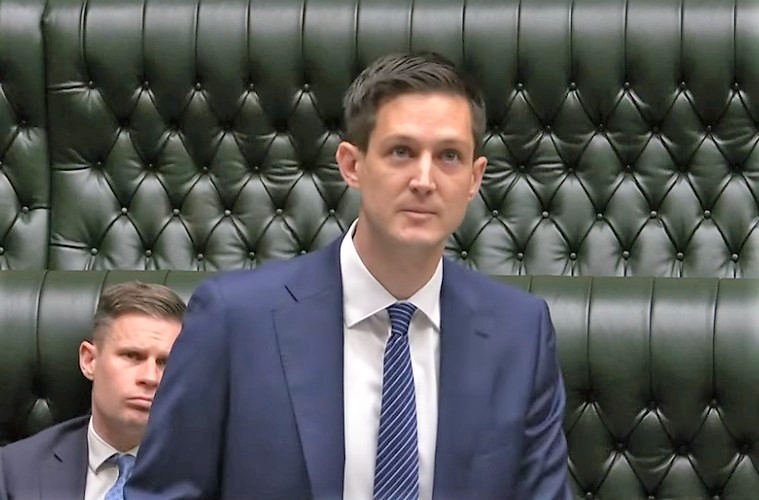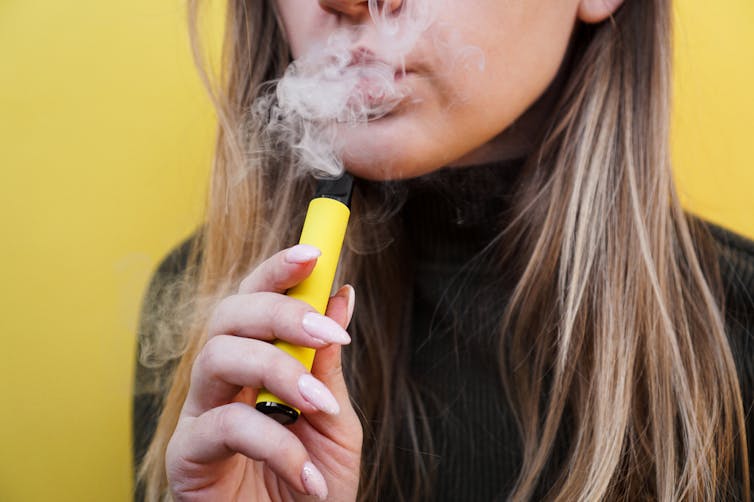Pittwater MP Calls for blitz on vape stores

Pittwater MP Rory Amon has called for immediate measures to stamp out the rise of vapes use among younger residents in the NSW Parliament last week.
The discussion of the inappropriate placement of vapes stores where our children and young adults gather continues in our community, with parents and grandparents, teachers and carers already seeing the impacts of yet another nicotine product on the next generation.''To support concerned parents and teachers, and ensure our laws are enforced, the Government should implement the following measures urgently: an undercover blitz on stores and individuals selling vapes to children; increasing fines by 10-fold on those who sell vapes to children, which would increase the fine on individuals from $11,000 to $110,000 and the fine on a corporation from $55,000 to $550,000, a strong message which would help change behaviour; an immediate media campaign regarding increased enforcement action, and an education campaign targeted at kids; and the immediate rollout of vape detectors in all New South Wales schools. Those measures can be implemented now. '' Mr. Amon said on Tuesday August 22
''Each week my office receives calls and emails from worried parents, teachers and community members about the rise of vaping amongst children. It is well known that vaping is becoming more common among kids. That is deeply concerning. Vaping threatens not only kids' health but also their education. Research indicates that between 20 per cent and 60 per cent of high school students have vaped, including children as young as 11 years old. Many of those children are already addicted to vaping, with teachers reporting that some students are unable to wait until the end of the day, or even lunchtime, instead vaping inside the classroom.'' the Member for Pittwater stated

Pittwater MP Rory Amon
In December 2022 Federal Health Minister Mark Butler announced a new range of measures to re-ignite the fight against tobacco and start a new phase of tobacco control in Australia.
- stop the import of non-prescription vapes;
- increase the minimum quality standards for vapes including by restricting flavours, colours, and other ingredients;
- require pharmaceutical-like packaging;
- reduce the allowed nicotine concentrations and volumes; and
- ban all single use, disposable vapes.
Parents are calling for more scrutiny by those granting these leases, and those serving in the State and Federal health departments to ensure these locations cannot be used to target teenagers by the 'vapes' industry, which their chosen locations and signage would infer.
A 2020 study found that ''Findings suggest that, in some MSAs, vape shops and convenience stores may target youth and lower income populations.''
''Let me be clear, these remarks are not about adults who vape. That is a separate matter. '' Mr. Amon said
''This is about keeping our kids safe. It is clear that the Government must do more to address the epidemic of vaping amongst children. I am concerned that violations of the Public Health (Tobacco) Act 2008 are becoming more common. Any form of vaping is illegal for kids in Australia and New South Wales, yet research indicates that nearly 80 per cent of children believe it is easy to obtain a vape at a shop or online.
Vapes containing nicotine are meant to be illegal in New South Wales, but a lack of transparency regarding the contents of vapes means children are unknowingly damaging their health and developing addiction. Under section 16 of the Public Health (Tobacco) Act, advertisement of vapes is illegal.
However, many shopfronts display the word "vape", unchallenged by the Government. This must be stopped. Vaping is a serious issue, which requires laser-focused action. I implore the Government to take immediate action to prevent children from vaping.''
signage for a vape store at Mona Vale, with a signboard that faces towards the main bus-stop where students
What’s in vapes? Toxins, heavy metals, maybe radioactive polonium

If you asked me what’s in e-cigarettes, disposable vapes or e-liquids, my short answer would be “we don’t fully know”.
The huge and increasing range of products and flavours on the market, changes to ingredients when they are heated or interact with each other, and inadequate labelling make this a complicated question to answer.
Analytical chemistry, including my own team’s research, gives some answers. But understanding the health impacts adds another level of complexity. E-cigarettes’ risk to health varies depending on many factors including which device or flavours are used, and how people use them.
So vapers just don’t know what they’re inhaling and cannot be certain of the health impacts.
What do we know?
Despite these complexities, there are some consistencies between what different laboratories find.
Ingredients include nicotine, flavouring chemicals, and the liquids that carry them – primarily propylene glycol and glycerine.
Concerningly, we also find volatile organic compounds, particulate matter and carcinogens (agents that can cause cancer), many of which we know are harmful.
Our previous research also found 2-chlorophenol in about half of e-liquids users buy to top-up re-fillable e-cigarettes. This is one example of a chemical with no valid reason to be there. Globally, it’s classified as “harmful if inhaled”. Its presence is likely due to contamination during manufacturing.
How about polonium?
One potential ingredient that has been in the news in recent weeks is radioactive polonium-210, the same substance used to assassinate former Russian spy Alexander Litvinenko in 2006. The Queensland government is now testing vapes for it.
Polonium-210 can be found in traditional cigarettes and other tobacco products. That’s because tobacco plants absorb it and other radioactive materials from the soil, air and high-phosphate fertiliser.
Whether polonium-210 is found in aerosols produced by e-cigarettes remains to be seen. Although it is feasible if the glycerine in e-liquids comes from plants and similar fertilisers are used to grow them.
It’s not just the ingredients
Aside from their ingredients, the materials e-cigarette devices are made from can end up in our bodies.
Toxic metals and related substances such as arsenic, lead, chromium and nickel can be detected in both e-liquids and vapers’ urine, saliva and blood.
These substances can pose serious health risks (such as being carcinogenic). They can leach from several parts of an e-cigarette, including the heating coil, wires and soldered joints.

That’s not all
The process of heating e-liquids to create an inhalable aerosol also changes their chemical make-up to produce degradation products.
These include:
formaldehyde (a substance used to embalm dead bodies)
acetaldehyde (a key substance that contributes to a hangover after drinking alcohol)
acrolein (used as a chemical weapon in the first world war and now used as a herbicide).
These chemicals are often detected in e-cigarette samples. However due to different devices and how the samples are collected, the levels measured vary widely between studies.
Often, the levels are very low, leading to proponents of vaping arguing e-cigarettes are far safer than tobacco smoking.
But this argument does not acknowledge that many e-cigarette users (particularly adolescents) were or are not cigarette smokers, meaning a better comparison is between e-cigarette use and breathing “fresh” air.
An e-cigarette user is undoubtedly exposed to more toxins and harmful substances than a non-smoker. People who buy tobacco cigarettes are also confronted with a plethora of warnings about the hazards of smoking, while vapers generally are not.
How about labelling?
This leads to another reason why it’s impossible to tell what is in vapes – the lack of information, including warnings, on the label.
Even if labels are present, they don’t always reflect what’s in the product. Nicotine concentration of e-liquids is often quite different to what is on the label, and “nicotine-free” e-liquids often contain nicotine.
Products are also labelled with generic flavour names such as “berry” or “tobacco”. But there is no way for a user to know what chemicals have been added to make those “berry” or “tobacco” flavours or the changes in these chemicals that may occur with heating and/or interacting with other ingredients and the device components. “Berry” flavour alone could be made from more than 35 different chemicals.
Flavouring chemicals may be “food grade” or classified as safe-to-eat. However mixing them into e-liquids, heating and inhaling them is a very different type of exposure, compared to eating them.
One example is benzaldehyde (an almond flavouring). When this is inhaled, it impairs the immune function of lung cells. This could potentially reduce a vaper’s ability to deal with other inhaled toxins, or respiratory infections.
Benzaldehyde is one of only eight banned e-liquid ingredients in Australia. The list is so short because we don’t have enough information on the health effects if inhaled of other flavouring chemicals, and their interactions with other e-liquid ingredients.
Where to next?
For us to better assess the health risks of vapes, we need to learn more about:
what happens when flavour chemicals are heated and inhaled
the interactions between different e-liquid ingredients
what other contaminants may be present in e-liquids
new, potentially harmful, substances in e-cigarettes.
Finally, we need to know more about how people use e-cigarettes so we can better understand and quantify the health risks in the real world.![]()
Alexander Larcombe, Associate Professor and Head of Respiratory Environmental Health, Telethon Kids Institute
This article is republished from The Conversation under a Creative Commons license. Read the original article.